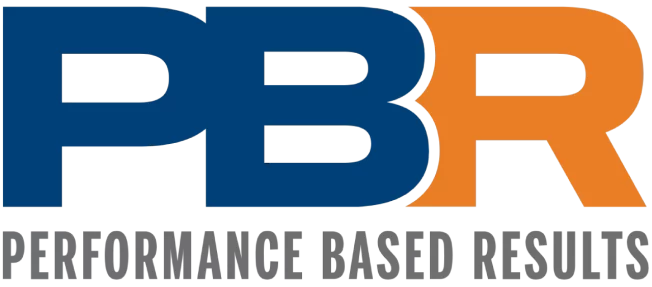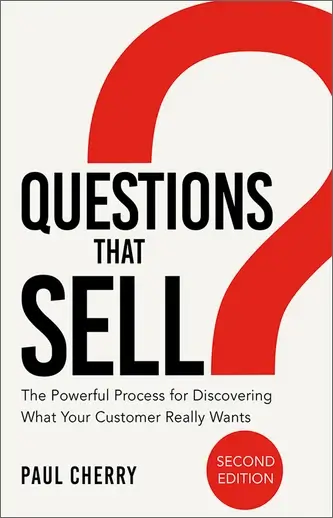Calculating the closing ratio provides crucial insights into sales performance. To determine this ratio, divide the number of sales achieved by the number of leads generated during a specific period.
For example, if you closed 20 sales out of 100 leads, your closing ratio would be 20%. This calculation provides valuable insights into the effectiveness of your sales efforts and helps in setting realistic targets.
It also highlights areas for improvement in your sales process, such as lead nurturing or closing techniques. Using a closing ratio calculator simplifies this process by automating the calculation based on the input of sales and lead data.
Regularly monitoring and analyzing your closing ratio allows you to refine strategies, optimize resources, and ultimately increase your sales volume over time.
What is a closing ratio?
A closing ratio is a fundamental measure in sales that indicates the percentage of leads or prospects successfully converted into paying customers within a specific period. It serves as a barometer for sales effectiveness and the efficiency of the sales process.
This metric is crucial for businesses to assess the performance of their sales efforts, identify strengths and weaknesses in their strategies, and optimize their approach to maximize conversions. A higher closing ratio suggests strong sales skills, effective customer engagement, and a well-managed sales pipeline.
By continuously monitoring and improving the closing ratio, businesses can enhance sales performance, foster customer loyalty, and achieve sustainable growth in competitive markets.
Why is the closing ratio important?
The closing ratio holds significant importance in sales because it serves as a vital indicator of efficiency and effectiveness in converting leads into customers.
Measuring the percentage of successful sales closures relative to the total number of leads pursued allows businesses to clearly gauge the performance of their sales efforts. A high closing ratio indicates that the sales team is effectively engaging and persuading potential customers, resulting in more conversions and increased revenue.
It also highlights areas of strength and weakness in the sales process, allowing for targeted improvements and adjustments in strategy.
Evaluate Sales Performance
Evaluating sales performance, especially using tools such as a closing ratio calculator, is essential for businesses looking to optimize their sales strategies. The closing ratio, which measures the percentage of leads converted into customers, provides valuable insights into the effectiveness of sales efforts.
Using a closing ratio calculator, businesses can quantify their success in converting leads and identify areas for improvement in the sales process. A higher closing ratio often indicates improved customer interaction, successful sales methods, and an efficient sales process.
Additionally, it aids in establishing achievable sales objectives, optimizing resource allocation, and projecting future income. Integrating sales management training into this process ensures that teams are equipped with the skills and strategies needed to interpret and utilize data effectively.
Regularly evaluating sales performance using tools like the closing ratio calculator enables businesses to make informed decisions, refine their approach to customer acquisition, and ultimately drive sustainable growth in sales volume and profitability.
Identify Improvement Areas
Using a closing ratio calculator is instrumental in identifying areas for improvement in sales strategies. This tool measures the percentage of leads converted into customers, offering insights into the effectiveness of sales efforts.
For instance, a low closing ratio might suggest issues with lead qualification, sales pitch effectiveness, or closing techniques. Armed with this data, businesses can implement targeted improvements such as enhancing sales training programs, refining customer engagement strategies, or optimizing follow-up procedures.
Consistently monitoring and adapting based on these insights not only improves the closing ratio but also enhances overall sales performance. This approach enables businesses to swiftly adjust to market changes, enhance customer satisfaction, and ultimately drive higher revenue and profitability.
Forecast Sales
Accurate sales forecasting is critical for effective business planning and strategy. The closing ratio calculator significantly aids in this process by offering valuable insights into conversion rates and sales trends.
Analyzing historical closing ratios and current sales pipeline data allows businesses to predict future revenue with greater precision. This allows for informed decision-making in resource allocation, staffing, and inventory management.
Additionally, integrating virtual live sales training into the forecasting process ensures that sales teams are equipped with up-to-date skills and strategies to interpret and leverage data effectively. Forecasting sales helps businesses set realistic goals and benchmarks, enabling them to measure performance and adjust strategies accordingly.
The closing ratio calculator facilitates proactive planning and strategic adjustments to maximize sales opportunities, ensuring that businesses are well-prepared to meet demand, capitalize on growth opportunities, and maintain financial stability in fluctuating market conditions.
How to Calculate the Closing Ratio
Calculating the closing ratio involves dividing the number of successful sales by the total number of leads, then multiplying by 100 to get a percentage. This metric provides insight into sales performance and conversion effectiveness.
Step 1: Identify Total Sales Opportunities
Identifying total sales opportunities is vital for businesses using a closing ratio calculator. This involves thoroughly cataloging every potential customer interaction, from initial outreach to follow-ups and engagements across various marketing channels.
This foundational step is crucial as it forms the basis for calculating the closing ratio—an essential metric in evaluating sales effectiveness. The closing ratio measures the percentage of leads or prospects successfully converted into customers, offering valuable insights into sales performance and conversion rates.
Understanding total sales opportunities allows businesses to refine their sales strategies, allocate resources strategically, and optimize customer engagement tactics. Ultimately, this informed approach enhances efficiency, boosts conversion rates, and drives sustainable business growth.
Step 2: Identify Total Closed Sales
Identifying total closed sales demand by tallying all completed transactions over a specific period, each representing a successful conversion from lead to paying customer. Accurately tracking total closed sales provides vital data for calculating the closing ratio, a metric that gauges sales effectiveness.
Analyzing closed sales helps businesses evaluate their performance, discern customer trends, and make informed decisions to enhance conversion rates. Furthermore, this process informs businesses about their revenue generation capacity, facilitates sales forecasting, and aids in resource allocation.
Leveraging insights from the closing ratio calculator enables businesses to refine sales strategies, improve customer satisfaction, and achieve sustainable growth in competitive markets.
Step 3: Use the Closing Ratio Formula
Using the closing ratio formula is a strategic approach to evaluating sales performance and efficiency. This formula calculates the percentage of leads or prospects that successfully convert into customers over a specific period.
Begin by tallying the total number of sales closed within this timeframe. Then, divide this figure by the total number of leads or prospects engaged during the same period. Multiply the result by 100 to obtain the closing ratio percentage.
For example, closing 20 sales out of 100 leads yields a closing ratio of 20%. This metric provides actionable insights into the effectiveness of your sales strategies and customer engagement tactics.
Example Calculation
Let’s delve into an example calculation using the closing ratio formula to illustrate its practical application in sales analysis. Imagine a sales team closes 30 deals in a month.
During the same period, they engaged with 150 leads. To find the closing ratio, divide the number of closed deals (30) by the total number of leads (150), which equals 0.2.
Multiply this result by 100 to get the closing ratio percentage of 20%. This calculation reveals that the sales team converted 20% of their leads into customers during that month.
Such insights are invaluable for businesses to assess their sales effectiveness, set achievable targets, and refine their strategies for better performance.
Using a Closing Ratio Calculator
Utilizing a closing ratio calculator is instrumental for businesses aiming to gauge their sales effectiveness accurately. This tool simplifies the process of calculating the percentage of leads or prospects converted into customers over a specific period.
Inputting the number of closed deals and total leads engaged allows businesses to swiftly determine their closing ratio, providing clear insights into their sales performance. The closing ratio calculator enables businesses to track and analyze key metrics essential for decision-making and strategy refinement.
It helps identify strengths in the sales process, pinpoint areas needing improvement, and set realistic sales targets. Regular use of this tool allows businesses to adapt quickly to market changes, optimize sales efforts, and enhance overall efficiency in converting leads into sales.
Tips to Improve Your Closing Ratio
Enhancing your closing ratio requires strategic measures to boost sales effectiveness.
By implementing targeted improvements in your sales approach and leveraging insights from a closing ratio calculator, you can refine customer engagement, optimize sales processes, and increase conversion rates.
These tips help businesses align their efforts with customer needs, improving overall sales performance and driving sustainable growth.
Qualify Leads Effectively
Effectively qualifying leads is crucial for maximizing your closing ratio using a closing ratio calculator. Emphasizing quality over quantity enables businesses to prioritize leads that are more likely to convert successfully.
Qualifying leads effectively ensures that sales efforts are directed toward prospects who are genuinely interested and capable of making a purchasing decision. This approach not only streamlines the sales process but also improves overall efficiency and conversion rates.
Utilizing a closing ratio calculator alongside effective lead qualification strategies enables businesses to refine their sales tactics, allocate resources more effectively, and achieve better sales outcomes.
Enhance Sales Training
Offering thorough and continuous training to sales teams helps improve their grasp of customer requirements, sales strategies, and the efficient utilization of tools such as the closing ratio calculator.
This approach empowers sales teams to interpret data insights more effectively, refine their approaches, and enhance their sales efficiency.
Moreover, integrating feedback loops and continuous learning opportunities into sales training programs ensures that sales teams remain adaptable and responsive to evolving market dynamics.
Follow Up Consistently
Effective follow-up not only increases the chances of converting leads into sales but also enhances customer satisfaction and loyalty. Utilizing the insights from a closing ratio calculator helps prioritize follow-up efforts based on data-driven metrics, such as engagement levels and buying signals.
This method guarantees that no potential opportunity is missed and enables businesses to consistently optimize their sales strategies. Eventually, consistent follow-up supported by a closing ratio calculator enables businesses to maintain a proactive approach, strengthen customer relationships, and achieve higher conversion rates, driving sustainable growth in sales and revenue.
Analyze and Adjust
Improving sales performance involves using a closing ratio calculator to analyze and adjust strategies effectively. This tool allows businesses to examine detailed metrics like conversion rates and sales trends, empowering them to make informed decisions.
Regularly reviewing data from the calculator helps businesses pinpoint strengths, weaknesses, and new opportunities within their sales operations. Moreover, this analytical approach allows for proactive adjustments in sales tactics, ensuring alignment with customer preferences and market dynamics.
Whether refining outreach strategies, optimizing follow-up procedures, or reallocating resources, the insights gained from the closing ratio calculator guide strategic improvements.
Wrap up
In conclusion, the closing ratio calculator is instrumental for businesses seeking to fine-tune their sales strategies and improve performance. Through systematic tracking and analysis of conversion rates, businesses acquire valuable insights into their sales effectiveness. This process enables informed decision-making and targeted enhancements in customer engagement and sales processes.
Also, the closing ratio calculator enables businesses to set realistic goals, allocate resources efficiently, and enhance overall sales efficiency. It acts as a compass, guiding businesses toward identifying areas for growth and adaptation in a competitive market landscape.






